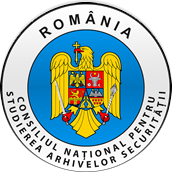Legislative framework
After the restoration of Estonia’s independence on 20 August 1991 and the decision of the Government of the Republic of Estonia to discontinue the activity of the KGB in Estonia (26 August 1991), negotiations began with the USSR KGB for the termination of the ESSR KGB and also for handing its archival materials over to the Republic of Estonia. According to the agreement signed on 9 October 1991 by the Prime Minister of Estonia, the chairman of the USSR KGB, and the chairman of the ESSR KGB, the signatories were obligated to trilaterally form a special committee for handing over the archival materials, and the archival collections that were to be handed over were designated.
In October of 1991, the director of the Estonian Archival Board Peep Pillak also presented a public demand for KGB materials to be transferred to the national archive, which was being reorganised at that time. Yet another year and a half passed before the order issued by the Government of the Republic of Estonia on 19 April 1993 prescribed the transfer of KGB materials from the Police Board’s archive to Estonia’s national archive system. The Estonian Archival Board formed a committee for launching the takeover process. The employees of archives were involved in carrying out an inventory check on the materials that were to be transferred. By the end of 1993, most of the archival collections of the ESSR Committee for State Security together with their accompanying finding aids had been brought to the depositories of the Estonian National Archives Branch Archive (Communist Party Archive) in Tallinn.
In summary, the KGB handed only a small portion of its archive over to the Republic of Estonia. The complete composition and preservation of the ESSR KGB archive and of documentation that had not yet been archived at that time is unknown at the present time. The most valuable part of what has been handed over to the Estonian state nevertheless makes it possible to research communist crimes at their high point in the 1940s and 1950s, and to ascertain the fates of their victims and identify the individuals who committed crimes against humanity. In addition another small quantity of KGB foreign intelligence files concerning Estonia was transferred to the National Archives of Estonia from the Estonian Government Office in 1997. How the Estonian authorities came into possession of these files is not precisely known. Currently, a total of 114,431 files of KGB documents and collections of photographs are preserved in 19 National Archives’ collections.
In Estonian society, matters associated with KGB documents preserved in Estonian archives have lost their sensational aura. People have arrived at the belief that major exposés can no longer come from those documents, and have largely come to terms with the fact that individuals were extensively involved in covert collaboration with the KGB. A relatively similar per- ception of the credibility of KGB documents as historical source material prevails among Estonian historians, which allows these documents to be used in research work while carefully apply- ing source criticism.
Institution in charge of the archival records
According to the Estonian Archives Act (2011), access to every archival record preserved at the National Archives is open to all, if restrictions established in the Public Information Act, the Personal Data Protection Act, the State Secrets and Classified Information on Foreign Affairs Act, or in other legislation do not extend to it.
Requirements concerning the protection of personal data that have become tougher year after year have started regulating access restrictions on materials containing personal data concerning third parties in a more clear-cut manner. e Personal Data Protection Act (passed in 1996, 2003 and 2008) has gone through a noteworthy evolution over the years. One of the aims of the wording of the new Personal Data Protection Act (IKS)8 that went into e ect in 2008 was to regulate the processing of personal data for research and statistical purposes, which had previously not been provided for (IKS § 16). The general principle of the act is that the processing of personal data is allowed only with the consent of the data subject (IKS § 10). Without consent, it is permissible to process the data of those individuals since whose death over 30 years have passed (IKS § 13). The implementation of the principles established by the new legislation extended the number of KGB archival collections subject to access restrictions. us at the current time, only 4 KGB collections, of a total of 19, can be used without restrictions.
The basis for access restriction is IKS § 4 section 2, which defines so-called “sensitive personal data” among the overall body of personal data. These are:
- data revealing political opinions or religious or philosophical beliefs, except data relating to being a member of a legal profession in private law registered pursuant to the procedure provided by law;
- data revealing ethnic or racial origin;
- data on state of health or disability;
- data on genetic information;
- biometric data (above all fingerprints, palm prints, eye iris images and genetic data);
- information on sex life;
- information on trade union membership;
- information concerning commission of an o ence or falling victim to an offence before a public court hearing, or making of a decision in the matter of the offence or termination of the court proceeding in the matter.
Information on the existence and conditions for use of archival records with restricted access is public. All archival material in Estonia, including materials of the former KGB, can be found via the online Archival Information System National Archives of Estonia and Tallinn City Archives. KGB and Ministry of Internal Affairs archival collections can be found in the National Archives directory of collections. KGB and ECP materials are physically preserved in the City of Tartu in modern depositories, which were completed along with the main building of the National Archives in 2016.
According to the procedure established at the National Archives, restriction of access is initially applied to the collection as a whole, yet in issuing materials to researchers, decisions are made based on individual files. In order to gain access to KGB archival records to which access is restricted, the researcher must give grounds for his need for access and the National Archives must verify the researcher’s need for access, which may derive from his occupational tasks or research interest. For this the researcher submits an application for an access permit. If the researcher’s right to access information derives from legislation (fulfilment of occupational tasks, perusing information concerning oneself, perusing with the written consent of the data subject, or other such circumstance), the grounds provided can be minimal and the archive does not implement a deliberation of the decision. In all other cases, a description of the research theme and the expected result that is as detailed as possible must be presented in the application, because the National Archives decide on providing access by way of deliberation.
In summary, in Estonia a rather bureaucratic model of access to KGB materials is now applicable.

![]() , operative and personnel files (personal files of staff members of the Ministry of interior
, operative and personnel files (personal files of staff members of the Ministry of interior![]() ) were made accessible pursuant to Act No. 140/1996 Coll., in the wording of Act No. 107/2002 Coll. on the access to records created by the activity of the State security. In practice this translated into massive anonymisation of personal data, often badly legible copies of documents and long waiting times for obtaining the documents. Unfortunately, these documents which were made accessible to researchers prior to 1 January 2005 based on then valid legislation continue to be presented to researchers only in digital copies with some of the information anonymised. However, this pertains only to documents younger than 30 years and older materials from previous times can be studied by researchers without anonymisation. The procedure for requesting access to records is available in English only on the old website of the Security Services Archive. For a better idea we recommend to visit the Resources page.
) were made accessible pursuant to Act No. 140/1996 Coll., in the wording of Act No. 107/2002 Coll. on the access to records created by the activity of the State security. In practice this translated into massive anonymisation of personal data, often badly legible copies of documents and long waiting times for obtaining the documents. Unfortunately, these documents which were made accessible to researchers prior to 1 January 2005 based on then valid legislation continue to be presented to researchers only in digital copies with some of the information anonymised. However, this pertains only to documents younger than 30 years and older materials from previous times can be studied by researchers without anonymisation. The procedure for requesting access to records is available in English only on the old website of the Security Services Archive. For a better idea we recommend to visit the Resources page. 



